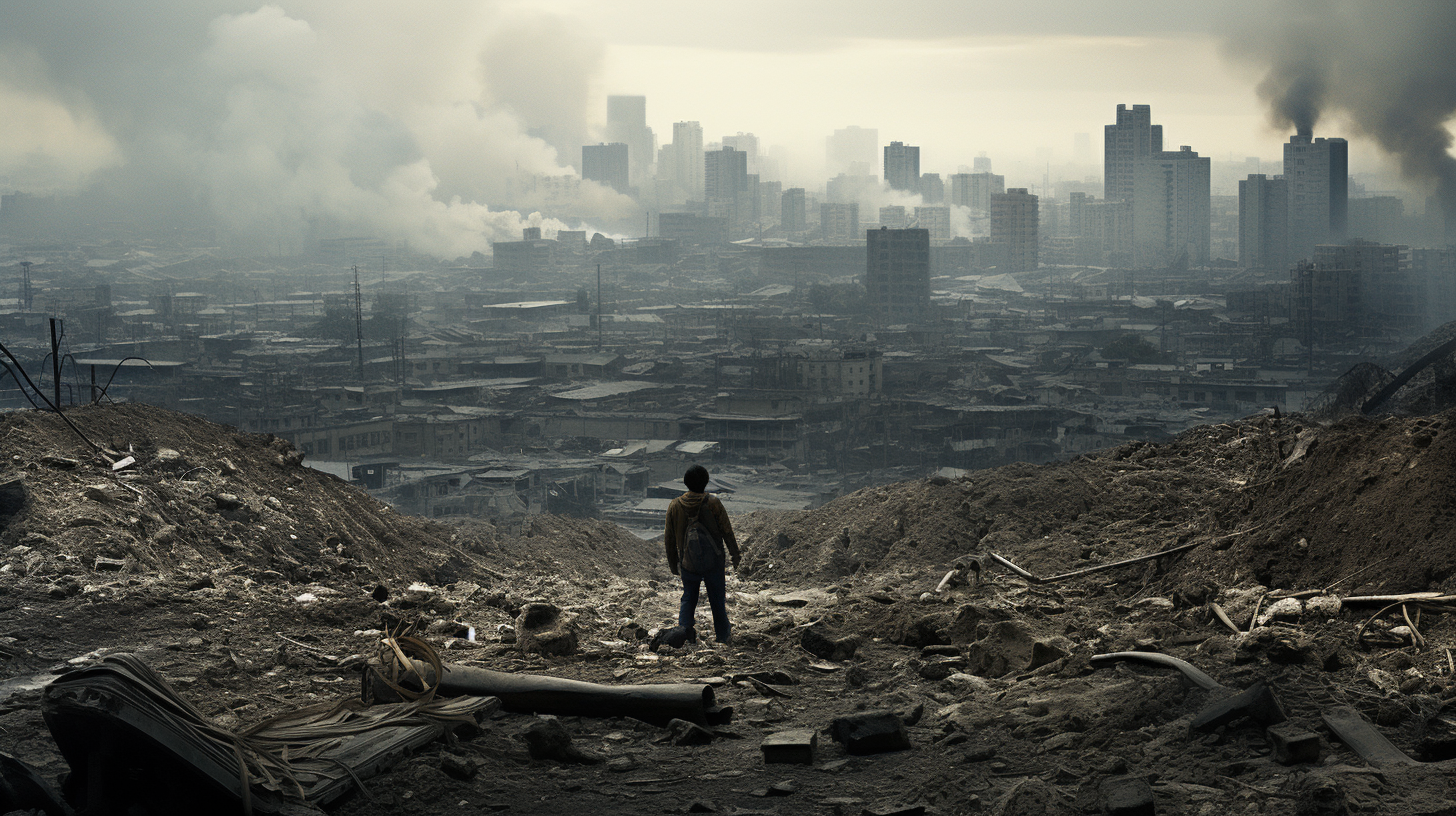In an epoch where humanity’s footprint has turned against its creator, we stand at the precipice of a world unrecognizable. Forgotten are the days of high-rises reflecting the hopeful gleam of dawn; now, they stand haggard and weary, pelted eternally by the relentless grains of a once fertile soil turned rogue. Here goes an odyssey, a tale of the Cities in the Dust: The Aridification of Urban Dreams.
Imagine the resolute skyline of New York, the beating heart of Tokyo, and the sprawling expanse of Mexico City. Today, these mighty urban landscapes gasp for life in the suffocating grip of a relentless desert cloak. Where once rivers of people streamed across vibrant streets, now only the haunting whistles of an arid wind serenade the abandoned vestiges of civilization.
It is not a fantasy – it is the decrepit requiem for our cities, suffocating under the weight of the world’s neglect. The ‘Brown Tide’ continues to rise, as we’ve already seen. But now, the callous desertification chokes even the mightiest of our concrete jungles.
Scientists and policymakers alike warned of the impending doom. Models and projections, ones we considered abstract, are now etched into the barren ground of skyscrapers’ shadows. Cities, reliant on the arteries of water delivery and fertile soils on their peripheries, are now cut off from life’s essentials. It is not simply the land that turns to dust, but our urban dreams and aspirations too.
The fabric of civilization, woven with great diligence through centuries, unravels strand by strand, as Saharan and Arabian specters blanket former havens. Technology, once the herald of salvation, falls short. Satellites and drones that showed us the expanse of the creeping wastelands did nothing to halt their silent conquest.
And amidst this dying breath of urban prowess, we grasp at the straws of history. Echoes of the past speak of the 1930s Dust Bowl, but in this modern desolation, there is no escape to a verdant California – for that too has succumbed. In this narrative, there is no Okie caravan of salvation, only the inexorable march of desolation, leaving cities as lifeless as the bones that soon will lie within them.
What of the society that thrived within these metropolitan giants? Displaced and dispossessed, echoing the plight of climate refugees across the globe, but this time with no frontier left to conquer. Economies built upon these hubs of humanity crumble, taking down the mirage of eternal progress. Fields that once bore ample sustenance now bear the curse of starvation. The agricultural apocalypse, with the bitter taste of dust in its wake, has settled in.
The imagery we paint of tomorrow is no different from that of today; the future is not a foreshadow, but a mirror. For in this bleak reflection, there is no utopia on the horizon, no deus ex machina. What we once knew, with all its brilliance and bustle, is now an epitaph written by the arid winds.
As chroniclers of this bleak present, we must gaze long and hard at the remnants of our dreams. Each grain of sand carries a story, a whisper of the greatness that once was. Nature, in its grand design, has always reclaimed its territory, and in our hubris, we believed ourselves to be exempt.
But even amid this downfall, we narrate. We seek to keep the ember of remembrance alive, for stories are the last vestige of a world that will soon be forgotten. The resilience of those who fight daily against the encroaching sands, their stories deserve the telling. They, who breathe life into the final chapters of Cities in the Dust, remind us of the cost of what is irretrievably lost in the pursuit of ambition divorced from the natural order.
In closing this chapter of our living dystopia, let not the silence be an oppressor. The streets bereft of life, the structures succumbing to time and desert – they form a canvas. A landscape of lessons unheeded and warnings unattended. As we continue to chronicle the aridification of urban dreams, let it not just be a testament of failure, but also a dirge for the world we built and the Earth we scorched.
